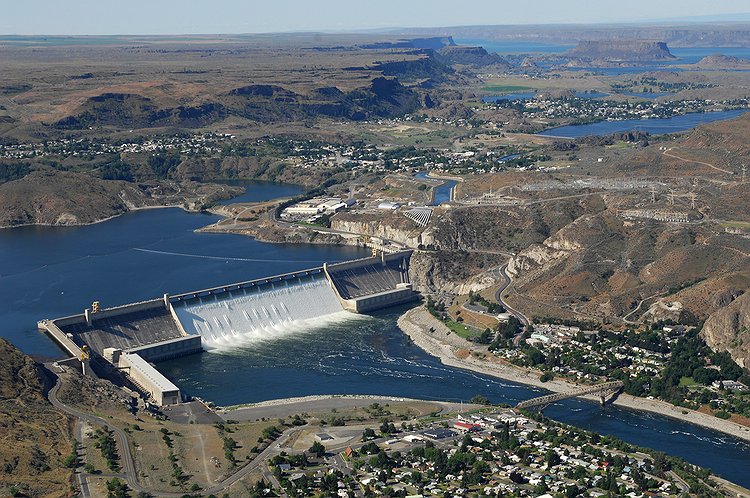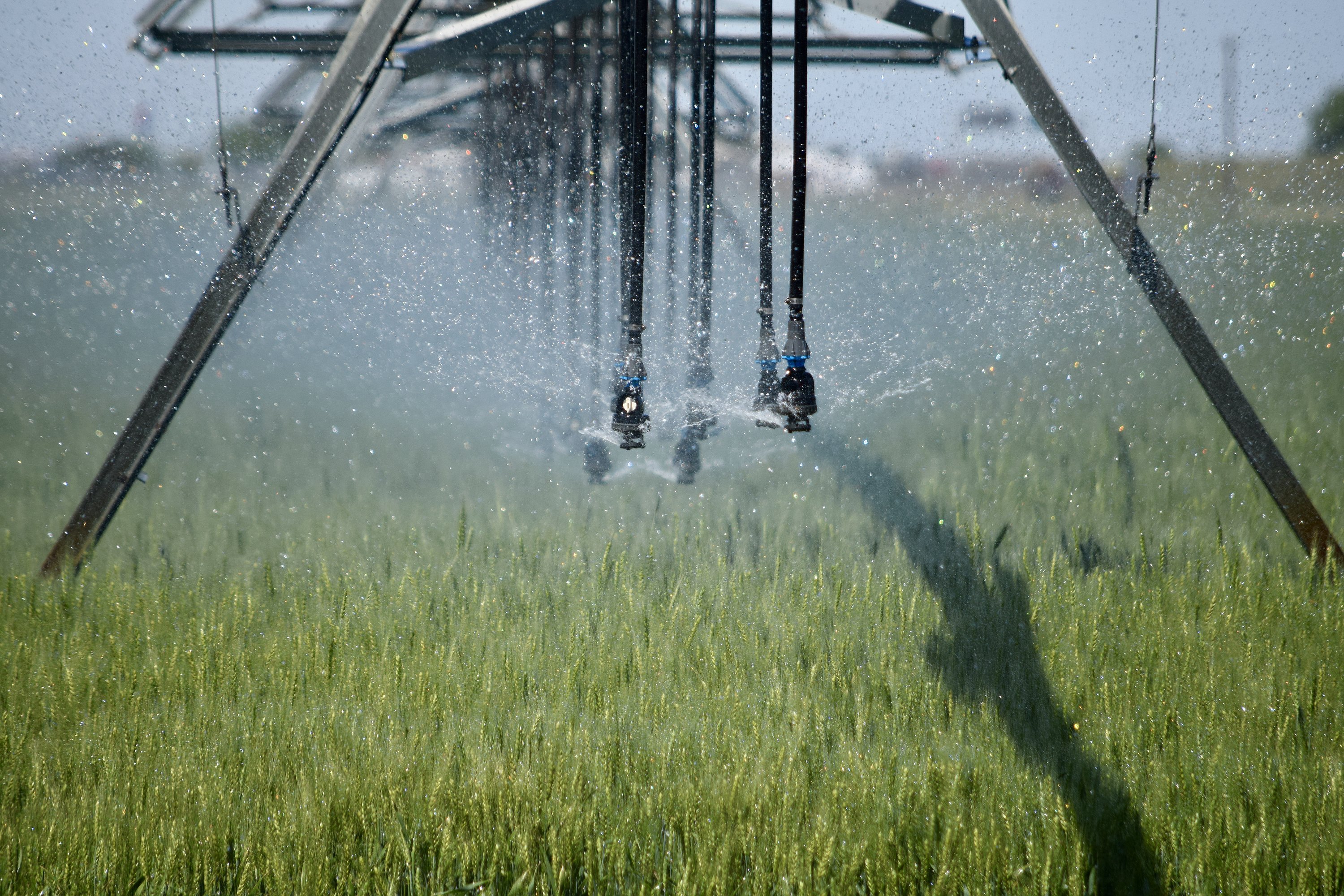Water works: Columbia Basin Project making progress with Odessa Subarea
GABRIEL DAVIS | Hagadone News Network | UPDATED 2 years AGO
Gabriel Davis is a resident of Othello who enjoys the connections with his sources. Davis is a graduate of Northwest Nazarene University where he studied English and creative writing. During his free time, he enjoys reading, TV, movies and games – anything with a good story, though he has a preference for science fiction and crime. He covers the communities on the south end of Grant County and in Adams County. | November 30, 2023 1:00 AM
General Counsel for the CBDL Colleen Frei explained some of these recent accomplishments.
“The project has some exciting things that have been occurring in recent years, particularly with the Odessa Groundwater Replacement Program, which has been a phenomenal collaboration of both federal and Washington state agencies, local regulators and also the landowners there in the Odessa groundwater area,” Frei said. “So that’s kind of been the most recent excitement for the Columbia Basin Project, although the full project is certainly supporting many other needs beyond just the Odessa Subarea.”
East Columbia Basin Irrigation District Secretary-Manager Craig Simpson spoke about how the OGWRP is going.
“It’s going well,” he said. “It just takes a lot longer than everybody’s patients wants to allow, I guess. It’s a huge project, right? We’ve made a lot of strides over time, but it’s never as quickly as any of us really wanted to happen.”
Simpson said discussion of the OGWRP started in the early 2000s.
The ECBID website provides background on the purpose of the Columbia Basin Project and the OGWRP. The ECBID is one of the three irrigation districts that distribute Columbia Basin Project water.
“More than 75 years ago, state and federal agencies began an effort to divert 3% of Columbia River water to over 1 million acres to irrigate farms and provide water to several municipalities within the project area,” said the site. “This effort took place over many decades but was never completed, and today farmers in the Columbia Basin are still waiting for the promised Congressionally authorized irrigation water.”
Frei addressed the ongoing nature of the project.
“When you’re talking about a project of this magnitude that encompasses multiple federal agencies,” Frei said, “including U.S. Congress, plus the state agencies, the local municipalities, all the private landowners, the tribes as well, you really have to wrap your arms around getting everyone’s participation and creative collaboration on the project and on moving forward with completion.”
Frei said the project does not currently have an estimated end date or year, and CBDL Executive Director Sara Higgins said it will be far in the future.
“In terms of Columbia Basin Project completion, now we’re talking about multiple, multiple decades,” Higgins said. “That effort hasn’t been picked up in terms of active engagement, and there’s a prescribed process for that – that has several years in terms of studies before we ever reach a construction phase, and of course, there’s funding needed for that.”
According to an economic analysis by Highland Economics the CBDL had done for the project in 2022, the Columbia Basin Project’s economic contribution to the country includes $2.66 billion in annual crop production value, 65,900 jobs nationwide and, with the amount of food grown on land irrigated by the project, 8.9 million Americans fed.
About 300,000 acres of the original project’s approved coverage await a reliable source of irrigation water, according to the CBDL website.
“As farmers waited (for project water), they were given permission to drill wells to access the water in the Odessa Subarea Aquifer,” said the ECBID website. “A non-replenishing aquifer, the Odessa is now dangerously close to running dry. Wells are failing, leaving irrigators and local communities without a reliable source of water, impacting local and state economies.”
Higgins said the OGWRP has been the main focus of the Columbia Basin Project in recent years due to the declining aquifer and the economic and resource crisis it potentially represents.
“Two weeks ago we signed a grant agreement with the state for $32.8 million,” said Simpson, “and then on the same day the Columbia Basin Conservation District was notified the project also received $39.9 million for some of the same systems.”
Simpson said the ECBID intends to start construction on the new features these grants will fund in 2024.
“We’re actually going to be turning dirt soon,” Simpson said. “We’ve got the contracts with Reclamation to allow us to offer those to the landowners, so that’s already taken care of, the funding is already taken care of. We’re trying to get the nuts and bolts part of it done with the easements and whatnot and then finalizing contracts between us and the landowners. So it’s well, well on its way, so that’s pretty exciting.”
Higgins said OGWRP completion is still years away, and Simpson said even when its completed the OGWRP will only be a stopgap to prevent the aquifer from failing before the Columbia Basin Project can actually be completed.
Frei and Higgins said another milestone was having two community convenings in October.
“There were presentations from these different partners and involved participating parties,” Frei said. “The Department of Ecology, the local Columbia (Basin) irrigation districts as well as just private stakeholders in the project, and those stakeholder meetings were great because it was reinvigorating the conversation of ‘How are we going to move forward to accomplish completion of the project?’ and in doing so thinking about what are some of not just the challenges with completion but also the opportunities for collaboration and participation.”
Higgins said these conferences were important steps in discussing advancing the Columbia Basin Project in light of environmental and human factors across the globe may threaten food security in the future and the potential necessity of more irrigated land.
Frei elaborated on challenges the project currently faces.
“In many ways you have some of the challenges that just occur naturally, where we are…combining the forces of all the different participants,” Frei said. “We also have that there’s food and water desires here in our communities and they continue to grow as we continue to advance technologies and use of water, as well as the greater demand on water, and so that’s a challenge that exists for the project. There’s also the desire to be thoughtful about environmental concerns.”
Looking forward, Higgins said other milestones include the potential for appropriations funding for bridge improvements to help remove spots in the Columbia Basin Project’s canals are bottlenecked due to bridge width, as well as language potentially supporting the OGWRP in energy and water appropriation measures.
“The fact that we have got to this point is really monumental because, previously it felt a near impossible task,” Higgins said.
Simpson reflected on the Columbia Basin Project as a whole.
“We’re one of the best projects in the United States. It’s one of the most efficient irrigation projects that the Bureau of Reclamation has ever put together, the way that we can recapture and reuse most of the drainage from the two northern irrigation districts and make that water supply available for the southern one makes it a really highly efficient irrigation project,” Simpson said. “The three districts work really well together…We are super fortunate to have a one of the most secure water supplies in all of western United States.”
Gabriel Davis may be reached at [email protected]. Download the Columbia Basin Herald app on iOS and Android.
ARTICLES BY GABRIEL DAVIS

Work-based learning lets students build their own futures
MOSES LAKE — Work-based learning provides education opportunities for the workforce to receive hands-on training and technical education and prepare themselves to enter various industries. Educators and workforce development professionals from Eastern Washington discussed some the training they offer and the benefits of their programs. Next Generation Zone, an affiliate of WorkSource based in Spokane, provides job training opportunities for youth and young adults ages 16 to 24. Program Coordinator Kate Martin said there are multiple benefits to the program. “One of them is a paid work experience, and that’s where we reach out to area employers who are willing to take a young person and train them,” she said. “This is a short-term learning experience, so it’s typically about 240 hours; sometimes it could be longer or shorter. We’re the actual employer; we cover all of their wages, taxes, the L&I, and the employer just agrees to give them the experience and train them in whatever field it is that they’re wanting to go into.”

Serving schools: ESD superintendents reflect on operations, priorities
MOSES LAKE — Educational service districts are government-mandated agencies put in place to provide services to school districts across the state. ESD Superintendents discussed what they do and their priorities in operating their districts. ESD 105, led by Superintendent Kevin Chase, serves four counties, including Kittitas, Yakima and portions of Klickitat and Grant counties and provides support for 25 school districts – including Royal School District and Wahluke School District – and more than 66,000 students. “We help them collaborate with each other as well or collaborate with other partners,” Chase said. “(It’s) a lot of advocacy work, either regionally or across the state, or even federally, working on different issues that impact our education. And we provide very specialized services in certain situations in order to meet the needs of our students in our region and of our school districts.”

Columbia Basin Project making headway through Odessa Groundwater program
CASHMERE — The Columbia Basin Project is making gradual progress toward completion with particularly significant accomplishments for the Odessa Groundwater Replacement Program in the last six months or so, according to Columbia Basin Development League Executive Director Sara Higgins. “When we’re dealing with a project of this size, advancement is kind of like watching paint dry, but yes, there have been (developments),” she said. “There are a lot of exciting things happening right now.” There are more than 300 miles of main canals, about 2,000 miles of lateral canals and 3,500 miles of drains and wasteways in the irrigation project, according to the U.S. Bureau of Reclamation website. The CBDL advocates for the operation of those waterways and for the project to continue “build-out.”







